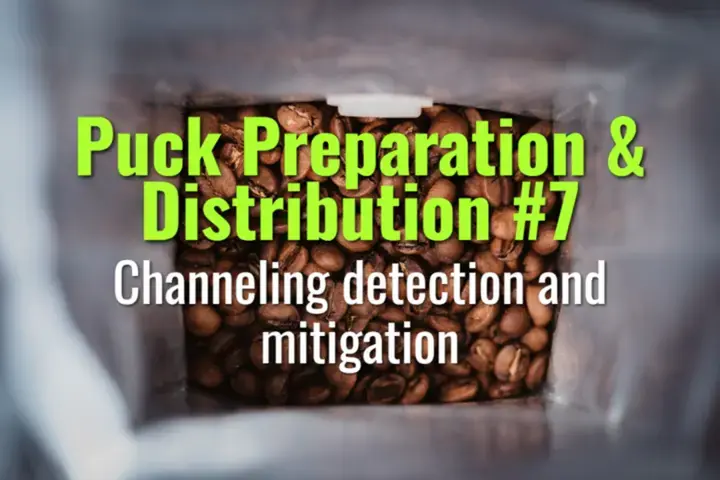Channeling detection and mitigation
How to detect espresso channeling, understand its causes, and apply puck preparation techniques to prevent it.
- Coffee Basics Nerds
- 1 min read
Article 7 of 12 in Puck Preparation & Distribution/

What is Channeling?
- Definition: Uneven water flow through weak points in the coffee puck.
- Effect: Creates over- and under-extracted zones, leading to unbalanced flavors.
Detection Methods
- Naked Portafilter (Bottomless):
- Clear view of extraction.
- Channeling signs: spurting, squirting, uneven streams, blonding patches.
- Taste Indicators:
- Inconsistent balance—mix of sourness and bitterness in same shot.
- Thin or hollow body.
- Crema Analysis:
- Uneven crema color or patchy blond spots.
Causes of Channeling
- Uneven puck distribution or clumps.
- Tamping at an angle or with inconsistent pressure.
- Excess headspace or fractured puck.
- Grinder retention leading to uneven grind sizes.
- Basket or machine cleanliness issues.
Mitigation Techniques
- Grind & Dose: Match grind to basket dose capacity; avoid under- or overfilling.
- Distribution: Use WDT, Stockfleth’s move, or OCD tools for uniform coffee bed.
- Tamping: Keep level, consistent, and firm without over-tamping.
- Paper Filters/Puck Screens: Improve water dispersion and reduce surface erosion.
- Equipment: Maintain burr sharpness, clean shower screen and baskets regularly.
Flavor Outcomes
- With channeling: uneven balance, harsh bitterness and sourness coexisting.
- Without channeling: smooth, sweet, and balanced espresso with even mouthfeel.
Summary
Channeling disrupts extraction by allowing water to bypass parts of the puck. Detecting it through bottomless portafilters, crema, and taste, then applying distribution, tamping, and filtration strategies, ensures uniform extractions and consistent espresso quality.